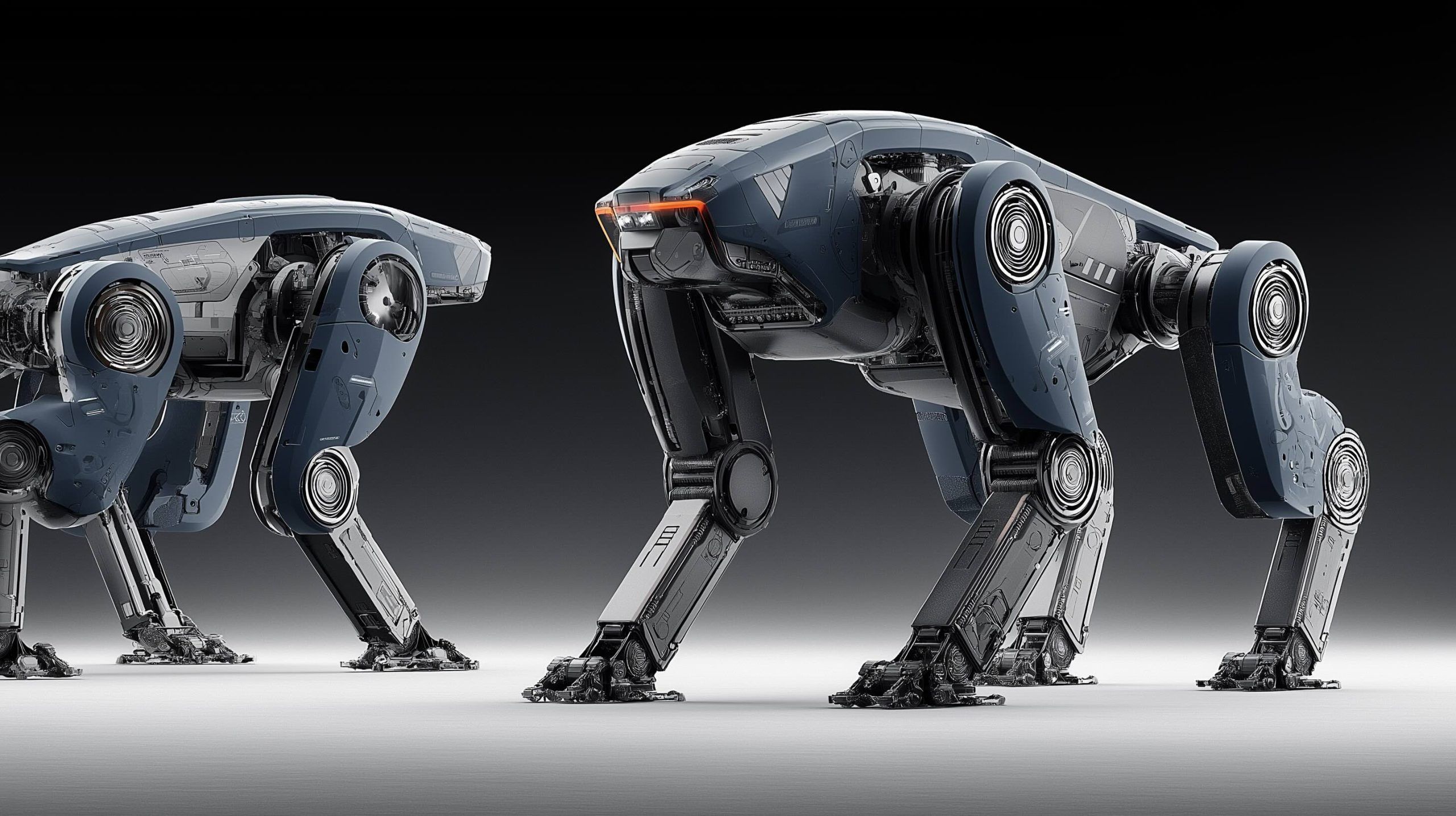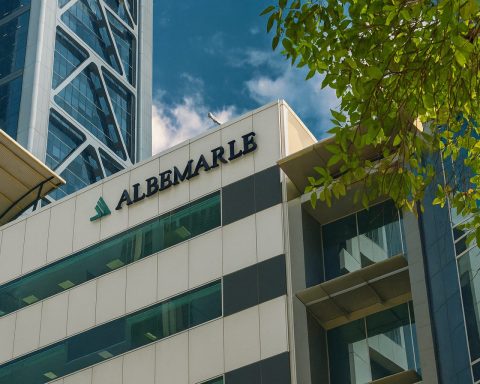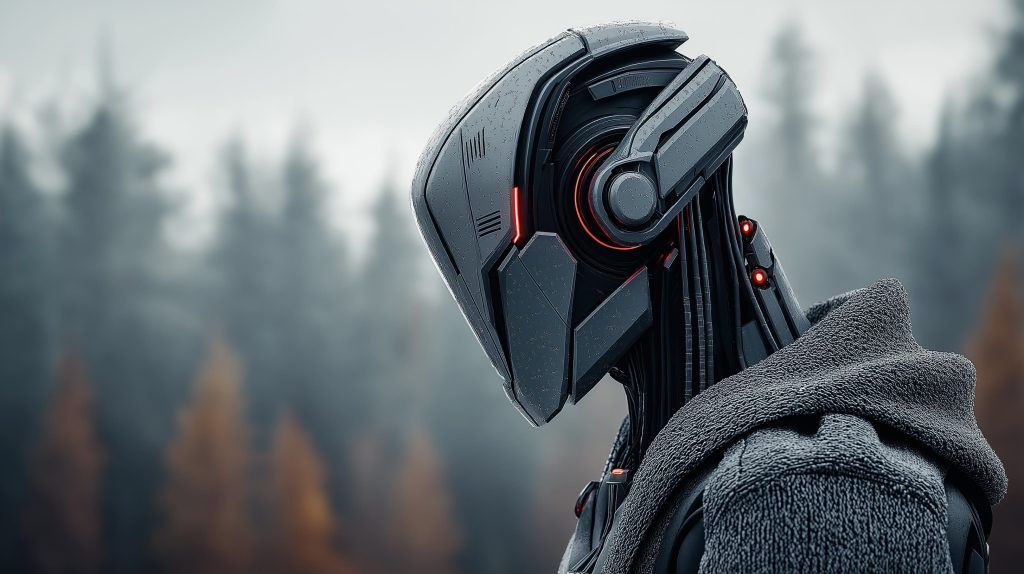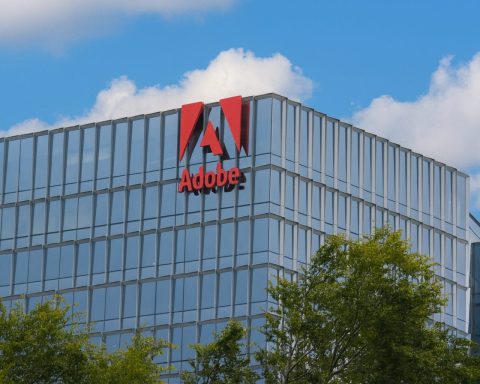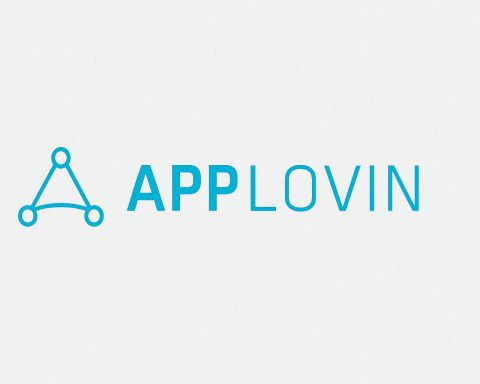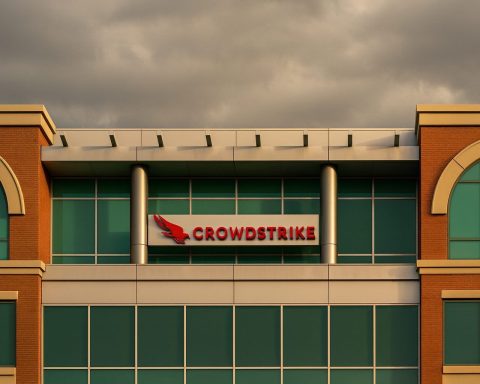- In 1961, the first industrial robot, Unimate, was installed on a General Motors assembly line.
- From 1966 to 1972, Stanford Research Institute’s Shakey became the first mobile robot to reason about its actions using AI.
- In 1973, Kawasaki introduced the first robot arm with six electromechanical axes.
- In 1981, IBM introduced a robotic arm controlled by a microcomputer.
- In 1997, IBM’s Deep Blue defeated world chess champion Garry Kasparov.
- In 2002, iRobot released the Roomba, the first widely adopted consumer robot.
- In 2012, AlexNet achieved a breakthrough in image recognition, signaling the deep learning renaissance.
- In 2016, Google’s DeepMind AlphaGo defeated Go champion Lee Sedol.
- In 2021, NASA’s Perseverance rover deployed the Ingenuity helicopter, the first aircraft to fly on another planet.
- In 2025, the European Union’s AI Act began applying provisions as the world’s first comprehensive AI regulation, with most deadlines extending to 2026.
Defining Artificial Intelligence and Robotics – A “Brain” vs. “Body”
Artificial Intelligence (AI) and robotics are closely related but fundamentally different fields. Artificial intelligence refers to software and algorithms designed to perform tasks that typically require human-like intelligence – such as learning, decision making, and problem-solving [1] [2]. In contrast, robotics is the branch of technology focused on physical machines (robots) that can act on the world – robots sense their environment and execute movements via motors or actuators [3] [4]. An easy way to think of it: AI acts as the “brain,” while robotics provides the “body” [5].
In practical terms, an AI system might run entirely on a computer (for example, a chess-playing program or a voice assistant) without any physical form. A robot, on the other hand, is a tangible machine like a factory arm or a wheeled rover – it may or may not use AI. Many robots today are “dumb” machines simply following preset instructions [6] [7]. Likewise, many AI programs have no embodiment (for instance, an AI sorting your email). Only in the overlapping area – “AI-powered robots” – do the two fields converge [8] [9].
“There’s nothing artificial about AI – it’s inspired by people, created by people, and, most importantly, it impacts people. It is a powerful tool we are only just beginning to understand, and that is a profound responsibility.” – Fei-Fei Li, Stanford AI scientist [10].
In short, AI is software intelligence, while robotics produces mechanical action. Robotics builds the bodies; AI programs the minds. Robotics operates in the physical world, and AI operates in the realm of information and computation. This also means their challenges differ: roboticists grapple with sensors, hardware and safety, whereas AI researchers focus on data, algorithms and computing power. As one robotics expert explains, “Robotics involves building robots – physical machines – whereas AI involves programming intelligence.” [11] Each can exist without the other, though together they enable “smart robots” – machines with both a body and a brain.
How AI and Robotics Intersect (and Where They Don’t)
Because of their different domains, classic examples of AI and of robotics have little in common. A famous AI like IBM’s Deep Blue chess program or the AlphaGo algorithm that defeated the Go world champion in 2016 had no robot hardware at all – they were purely software running on computers [12]. Conversely, an assembly-line robot arm welding car parts might be highly automated but not intelligent – it simply repeats a fixed motion and has no capacity to “learn” or make decisions [13] [14].
That said, the fields do overlap in artificially intelligent robots, which are increasingly common. An AI-driven robot is a machine with a physical form that is controlled by AI software. For example, a warehouse delivery robot might use AI algorithms for vision and navigation to move inventory around [15]. Drones and self-driving vehicles use AI to perceive their surroundings and make driving decisions – marrying robotics with advanced AI [16]. In homes, a robot vacuum uses simple AI to map your floor plan and avoid obstacles. These are all cases where AI provides the “brains” for a robotic “body.” As tech writer Bernard Marr puts it, when combined, “AI is the brain and robotics is the body” of a machine [17] [18].
It’s important to note that most robots today do not have sophisticated AI. Industrial robots, for instance, traditionally follow pre-programmed routines without learning or adapting [19] [20]. They excel at repetitive tasks but cannot make autonomous decisions. Meanwhile, plenty of AI software – from search engines to medical diagnosis tools – operates purely in the digital realm with no robotic form [21]. This separation is why AI and robotics developed as distinct fields. Only a small part of robotics involves AI, and not all AI research is related to robotics [22] [23].
However, as machines undertake more complex, unstructured tasks, the synergy of AI and robotics grows. Modern examples include robots that use computer vision AI to identify objects and decide how to grasp them, or autonomous drones that rely on AI for pathfinding and obstacle avoidance [24] [25]. Self-driving cars are a prime illustration: they are essentially robots (vehicles with sensors and actuators) that depend on AI brains to interpret sensor data and navigate safely. In these frontier applications, the line between AI and robotics blurs – we are effectively building “smart robots” that can perceive, decide, and act.
To summarize: AI and robotics are distinct technologies – one dealing with intelligent algorithms, the other with embodied machines. They intersect in the creation of intelligent machines, but one does not automatically require the other. This distinction helps us understand why advances in AI (like a breakthrough in language translation) are different from advances in robotics (like a new robotic arm design), even if ultimately the two can be combined for revolutionary results.
A Brief History of AI: From Dartmouth to Deep Learning
The dream of creating thinking machines is decades old. The field of artificial intelligence was formally born in 1956, when a group of scientists at Dartmouth College coined the term “AI” and set out to explore how machines could simulate human intelligence [26]. In those early days, researchers built programs that could solve math problems and play games – successes that led to optimism (and hype) about rapid progress. By the late 1960s, early AI programs like ELIZA (a simple chatbot therapist) and Shakey (a robot using AI planning) showed promise of machine reasoning and navigation [27] [28].
However, progress proved harder than expected. During the 1970s and again in the late 1980s, “AI winters” set in – periods when funding and interest dried up due to unmet expectations [29]. Early AI systems were brittle, computers were slow, and grand human-level AI remained elusive. Nonetheless, important milestones kept accumulating. In 1997, IBM’s Deep Blue supercomputer astonished the world by defeating world chess champion Garry Kasparov – a landmark for AI in gameplay [30]. By the early 2000s, AI began appearing in everyday tools (speech recognition in phones, simple recommendation algorithms, etc.), but truly robust AI was still limited.
The 2010s unleashed a renaissance in AI, driven by a technique called deep learning. In 2012, a neural network known as AlexNet achieved a breakthrough in image recognition, far surpassing previous algorithms at classifying objects in photos [31]. This watershed moment showed the power of training large neural networks on big data, given enough computing power. What followed was a rapid acceleration: speech recognition and machine translation reached usable accuracy; AI could outperform humans in more games (notably Google DeepMind’s AlphaGo beat Go champion Lee Sedol in 2016, a feat once thought a decade away [32]); and self-driving car prototypes began navigating streets. By late 2022, the advent of generative AI stunned the public – OpenAI’s ChatGPT (built on the GPT series of large language models) demonstrated AI that can hold conversations, write code, and create content with human-like fluency [33]. In 2023 and 2024, generative AI systems became mainstream, integrated into search engines, office software, and creative tools, heralding what Microsoft co-founder Bill Gates called “the most important advance in technology since the graphical user interface” [34]. AI was now not only solving niche problems but entering everyday life.
Today in 2025, AI is ubiquitous – from smartphone assistants finishing our sentences to back-end systems optimizing supply chains. Investment and research in AI are at all-time highs, driving rapid progress in areas like computer vision, natural language processing, and robotics (via improved machine learning for control). Yet challenges remain: AI still lacks true commonsense understanding, can be prone to errors or bias, and isn’t “thinking” in a human way – it’s pattern-matching on data. Even so, the historical trajectory of AI – from the speculative ideas of the 1950s, through winters and breakthroughs, to the deep learning revolution of the 2010s – shows an accelerating march toward more capable and useful artificial intelligence [35] [36].
A Brief History of Robotics: From Unimate to Mars Rovers
Humans have imagined mechanical helpers for centuries (the word “robot” comes from a 1921 play, referring to artificial workers). Real robotics took off with the advent of modern computers and control systems. The first industrial robot was created in the late 1950s by George Devol and Joseph Engelberger. Their invention, called Unimate, was essentially a one-ton mechanical arm that could be programmed to perform repetitive tasks [37]. In 1961, Unimate was installed on a General Motors assembly line in New Jersey – marking the first robot to work on a factory production line in the world [38]. This hulking arm dutifully picked up and stacked hot metal parts, automating a dangerous task. It was a historic moment for manufacturing.
Throughout the 1960s and 70s, robotics advanced primarily in industrial settings. Companies and research labs in the U.S., Japan, and Europe developed robot arms for welding, painting, and assembly. By 1969, companies like Kawasaki in Japan had licensed the Unimate design and produced the first robots in Japan, heralding the spread of robotics internationally [39]. Researchers also experimented with mobile robots. Stanford Research Institute’s Shakey (developed 1966–72) was a wheeled robot that could perceive its environment via a camera and move around – notably, Shakey was the first mobile robot to reason about its actions using AI, setting the foundation for today’s autonomous robots [40] [41].
In the 1970s, the technology matured: robotic arms got better sensors and more axes of movement (in 1973, KUKA introduced the first robot arm with six electromechanical axes [42]). Computer control allowed more precise and flexible operation. Robots began to proliferate on factory floors, especially in automotive manufacturing. For example, by the late 1970s, car makers like Fiat and Nissan had entire production lines of robotic spot welders [43], and by the 1980s industrial robots were welding and spray-painting at scale – taking on the “dirty and dangerous” jobs in factories. In 1981, IBM introduced a robotic arm controlled by a microcomputer, indicative of how computing advances improved robots.
A landmark in popular awareness came in 2000 when Honda unveiled ASIMO, a humanoid robot that could walk on two legs, climb stairs, and respond to voice commands. While not “intelligent” in an AI sense, ASIMO’s human-like form and balance were robotics feats that captivated the public. The early 2000s also saw robots move into our homes: in 2002, iRobot released the Roomba, a small autonomous vacuum cleaner, which became the first widely adopted consumer robot. This proved that reasonably priced robots could handle mundane chores. Millions of Roombas later, home robotics is a thriving niche.
Meanwhile, robots left Earth’s surface – literally. Space robotics has achieved incredible milestones: NASA’s robotic rovers have been exploring Mars for decades. Sojourner landed on Mars in 1997, Spirit and Opportunity roved for years starting in 2004, and Curiosity (2012) and Perseverance (2021) continue to survey the Martian terrain to this day. These rovers are essentially autonomous science robots, using AI to navigate rocks and sand. In 2021, the Perseverance rover even deployed a small helicopter drone, Ingenuity, which became the first aircraft to fly on another planet – a triumph of robotic engineering and AI-based control. Robots have also become crucial in Earth’s orbit: the International Space Station is equipped with robotic arms (like Canada’s “Canadarm2”) and free-flying helper robots (NASA’s Astrobee cubes) to assist astronauts with inspections and maintenance [44].
Today, robotics is a huge industry and a broad research field. Industrial robot usage has exploded worldwide – as of 2023, a record 4.28 million robots are operating in factories globally, a number that has been growing ~10% yearly [45]. Modern industrial robots are far more capable and easier to program than their 1960s ancestors, and increasingly they work alongside human workers (so-called “collaborative robots” or cobots). Outside of factories, we have robots in hospitals, on farms, in warehouses, and in our everyday lives (from delivery drones to robotic toys). The history of robotics is one of moving from fixed, heavy machines in controlled settings to more mobile, adaptive robots that share our human environments. As computing, sensors, and AI improved, robots gained the ability to do more varied and intelligent tasks – a trend that continues to accelerate.
How AI and Robotics Are Used in 2025 – Key Applications by Sector
In 2025, AI and robots are prevalent across almost every industry, often working in tandem. Here we explore how they’re being applied in major sectors:
Healthcare: Smarter Diagnoses, Robotic Surgeons, and Patient Care
Few fields have felt the positive impact of AI and robotics as much as healthcare. AI systems now assist doctors in diagnosing diseases by analyzing medical images, lab results, and patient data with incredible accuracy. For example, AI algorithms can detect patterns in X-rays or MRIs – spotting cancers or lung nodules often as well as (or sometimes better than) expert radiologists. One recent study found an AI tool could grade the aggressiveness of certain tumors far more accurately than traditional methods [46]. In practice, AI helps flag abnormalities (like early-stage cancers) so doctors can prioritize care. Beyond imaging, AI is used to predict patient deterioration, suggest treatment plans, and even help design new drugs (notably, Google’s DeepMind AlphaFold AI solved the protein-folding problem, accelerating drug discovery).
On the treatment side, robotics is transforming surgery and rehabilitation. Robotic surgical systems, like the well-known da Vinci robot, are assisting surgeons in performing minimally invasive surgeries with enhanced precision. These robotic arms (controlled by surgeons via consoles) can make finer movements than human hands, leading to smaller incisions, less blood loss, and faster recovery times for patients [47]. By 2025, robot-assisted surgery has become routine for procedures such as prostate removal, heart valve repair, and knee replacements. The market for surgical robots is booming – it’s projected to exceed $14 billion by 2026, up from $10 billion in 2023 [48]. In one example, a seven-year-old boy in the UK was successfully treated for a kidney condition using a new robotic device, resulting in less post-operative pain and quicker healing [49].
Robots are also helping patients recover. In physical therapy and elder care, assistive robots and exoskeletons provide mobility and support. For instance, powered exoskeleton suits can help paralyzed patients regain the ability to walk (as dramatized ahead of the 2024 Paris Olympics, when a paralyzed man used an exoskeleton to carry the torch [50]). Such devices use AI and sensors to interpret the user’s movements or intentions and provide balanced support, effectively “reading” muscle signals to assist walking [51]. In rehabilitation centers, social assistive robots coach patients through exercises – one pilot program used a robot companion to guide stroke survivors in arm exercises, using neural signals from the patient to gauge effort and give feedback [52]. These robot coaches never get tired or impatient, providing consistent encouragement that has improved patient adherence to rehab routines [53].
AI is streamlining many behind-the-scenes aspects of healthcare too. Hospitals employ AI to optimize scheduling (like operating room schedules or staff assignments) and manage logistics (predicting usage of supplies or beds). Telemedicine has embraced both AI and robotics: remote consultations may include an AI-powered symptom checker, and doctors can even operate tele-robotic devices. In 2023, a fully robotic dental surgery was performed in which robotic arms (guided by AI imaging) placed a dental implant without human hands – a notable first in automated surgery [54]. Tiny pill-sized robots can perform capsule endoscopies, traveling a patient’s GI tract to capture images; one new PillBot device can be swallowed and remotely controlled to conduct stomach exams without traditional endoscopy [55].
Robots also contribute to medical training. At UC San Diego, a lifelike humanoid robot named RIA has been developed to help train new doctors [56]. RIA can simulate a wide range of patient symptoms and even respond with human-like emotional reactions, thanks to AI. Medical students practice diagnosing and interviewing this robot patient. As one instructor noted, “RIA doesn’t get tired or judgmental… she can conduct these role plays over and over,” providing a safe training ground [57] [58].
From AI-driven drug research to robots delivering medications in hospitals, the combined use of AI and robotics in healthcare is saving lives and improving quality of care. Patients are benefiting from more precise surgeries, quicker diagnoses, and personalized therapy – often delivered or facilitated by intelligent machines. While human doctors and nurses remain central, they are increasingly augmented by AI “brains” and robotic “helpers” that extend what’s humanly possible in medicine [59] [60].
Defense and Security: Autonomous Drones, Robots on the Battlefield, and Ethical Dilemmas
Modern militaries are heavily investing in AI and robotics to enhance defense capabilities – and this is one arena where the technology’s cutting edge raises both groundbreaking possibilities and serious controversies. On the battlefield, robots and AI are being used to perform the “Dull, Dirty, and Dangerous” missions that soldiers traditionally handled. This includes unmanned aerial vehicles (UAVs or drones) for reconnaissance and air strikes, bomb-disposal robots that neutralize explosives, and semi-autonomous ground vehicles scouting ahead of troops. As a U.S. Army Futures Command general described, the goal is to “send a robot out to clear a building or lay a line charge to detonate an obstacle,” keeping human soldiers out of harm’s way – essentially “no blood through first contact.” [61] [62] Drones have already taken on many high-risk roles in the past two decades (for example, scouting enemy positions and delivering precision strikes from the air), and now the Army is seeking analogous land-based robotic systems to lighten the load for ground combat units [63].
Several militaries are testing robotic “teammates” for soldiers. These range from small autonomous vehicles that carry gear or wounded personnel, to experimental armed robots that could one day accompany human fighters. Notably, the concept of a “robot wingman” – an unmanned vehicle supporting a tank or infantry squad – is under active development. In one example, Germany’s defense sector is exploring tank-like AI-driven robots and even insect-inspired surveillance drones (“spy cockroaches” equipped with cameras) for future warfare [64]. According to a Reuters investigation, Europe’s spending on defense tech is surging, with many startups focusing on AI and robotics – indicating a transformation in military innovation that some compare to a modern “Manhattan Project” for AI weapons [65] [66].
However, these advances bring profound ethical and safety questions. The specter of “killer robots” – fully autonomous lethal weapons – has sparked global debate. AI-powered weapons like autonomous drones or missiles that select targets without human input are technically on the horizon and, in some cases, already exist in limited forms [67] [68]. Researchers warn that such systems could destabilize security: if countries can wage war with fewer soldiers at risk, the threshold for conflict may lower, potentially making wars more common [69]. There’s also the issue of accountability – if an AI-driven weapon makes a mistake or causes unintended harm, who is responsible? Militaries insist a human will “remain in the loop” for lethal decisions, but rapid reaction scenarios and AI speed make that harder. The United Nations has been debating a ban or regulation on lethal autonomous weapons (LAWs), though as of 2025 no international treaty exists. Some nations and advocacy groups urge a preemptive ban on “killer robots,” whereas major powers have been reluctant to constrain this technology.
On the cyber-defense side, AI algorithms help sift through vast data for threats – for example, AI is used to detect cyberattacks or identify terrorist activity from social media patterns. Law enforcement and border security also use AI-enhanced surveillance (facial recognition, predictive policing algorithms), which is controversial due to privacy and bias concerns. Police bomb squads have long used robots to handle explosives, and now aerial drones assist in search-and-rescue or suspect tracking. In 2022, a debate erupted in San Francisco over whether police could arm robots with lethal force in extreme situations – highlighting society’s unease with robots making life-and-death decisions. Ultimately, the city decided against weaponized robots for policing (for now).
In summary, AI and robotics in defense offer clear benefits: saving soldiers’ lives by letting machines take the risk, and processing information far faster than humans to make split-second decisions. Autonomous drones and land robots can act as tireless sentries or first-entry units. But these same technologies provoke serious discussions about oversight and moral responsibility. As one Pentagon report noted, AI is becoming “a force accelerant” in warfare that could compress decision times from minutes to milliseconds [70] – a shift that demands equally fast ethical and policy responses. Expect continued advances in military AI/robotics, accompanied by ongoing debates about how to keep the “human” in control of life-critical decisions in conflict.
Manufacturing and Industry: Automation on Steroids
In factories and warehouses, the combination of advanced robotics and AI is driving a new industrial revolution. Robots have been staples of automotive and electronics manufacturing for decades, but they are now far more capable, and AI is giving them new “smarts.” As mentioned, industrial robot usage is at an all-time high – over 4 million industrial robots are working in factories worldwide as of 2023, an all-time record that reflects steady growth in automation [71]. These robots handle tasks like welding, painting, assembly, and packaging with precision and speed that exceed human workers (and they can work 24/7 without fatigue). According to the International Federation of Robotics, over half a million new industrial robots are being installed each year [72].
What’s new in 2025 is the rise of collaborative robots (“cobots”) and AI-driven optimization in manufacturing. Unlike the big caged robots of old, cobots are smaller robots designed to work side-by-side with humans on the factory floor. They often use AI-powered computer vision and force sensors to safely slow or stop if a human comes too close, enabling true human-robot collaboration. This allows automation to spread to smaller companies and new types of tasks. For example, a cobot might assist a human worker by holding and manipulating a part while the worker does a complex assembly – essentially acting as a helpful third hand. Because cobots are aware of their environment (thanks to sensors and AI vision), they can be deployed without massive safety barriers, increasing flexibility in manufacturing.
AI also plays a role in manufacturing planning and quality control. Machine learning algorithms analyze production data to find patterns – predicting when a machine is likely to fail (enabling predictive maintenance before a breakdown occurs) or spotting subtle defects in products via automated visual inspection. Modern factories often have AI watching camera feeds on the assembly line to instantly detect an off-spec product, ejecting it before it goes further down the line. This improves quality and reduces waste. Supply chain and logistics operations within factories are also optimized by AI: systems automatically manage inventory, route materials to where they’re needed just in time, and even negotiate orders between suppliers and manufacturers.
In warehouses and fulfillment centers (like those run by e-commerce giants), robotics has caused a quiet revolution. Autonomous mobile robots zip through warehouse aisles fetching items; robotic conveyor systems and sorting arms handle packages at blinding speed. Amazon, for instance, uses over half a million mobile robots to ferry goods in its fulfillment centers. These robots navigate by scanning QR codes on the floor or using lidar sensors, coordinated by AI software that ensures every item is at the right place at the right time. The result is far faster processing – orders that once took hours for people to gather can be fulfilled in minutes by coordinated robot swarms. In 2023, sales of logistics robots (for warehouses, fulfillment and general transportation of goods) grew by 35%, making it the largest category of professional service robots – over 113,000 logistics robots were sold in that year alone [73] [74]. This reflects a global labor shortage in warehousing and a strong demand for robotic help in moving materials.
Transportation and logistics AI doesn’t stop at the warehouse door. On factory campuses and ports, autonomous vehicles tow loads and stack containers. Emerging “truck platooning” tech has AI linking semi-trucks on highways so that one lead human-driven truck can have self-driving followers, boosting efficiency. Fully self-driving trucks are still in pilot testing, but some have successfully completed route trials. AI scheduling systems also optimize delivery routes for human drivers, saving fuel and time.
Manufacturing is also seeing 3D printing robots, AI-driven design tools, and other advanced tech that blur the line between digital and physical production. AI can now help design optimized components (a concept known as generative design) which are then fabricated by robotic machines. Entire factories are trending towards the “lights-out” model, where automation is so complete that production can run unattended overnight – literally in the dark. For now, fully lights-out factories are rare and limited to straightforward products, but many facilities are partially autonomous.
All this automation does raise concerns about jobs. It’s true that robots have taken over many repetitive or physically demanding tasks in factories. But experts note this is part of a long trend – and argue that robots often take on the dangerous, dirty, and boring jobs, while humans move to more skilled roles. As pioneering roboticist Rodney Brooks famously said, “I see robotic technology getting rid of the dangerous, the dirty, and the just plain boring jobs… Let people rise to better things.” [75]. Indeed, history shows automation tends to eliminate some jobs but also creates new ones (robot technicians, AI maintenance experts, etc.) and often boosts overall productivity. The challenge in 2025 is ensuring workers have the opportunity to reskill and move into the new roles created by an AI-and-robotics-infused economy. Not everyone will easily transition, so companies and governments are grappling with workforce development even as they deploy more robots.
In short, factories in 2025 are smarter, faster, and more automated than ever. Industrial robots handle an expanding array of tasks – now with greater awareness and flexibility – and AI keeps the entire production pipeline running optimally. This results in cheaper, higher-quality goods produced at greater speed. It’s revolutionizing industry in a way not seen since the original Industrial Revolution, albeit with the critical difference that this time the “machines” can think (to an extent) and not just move.
Logistics and Transportation: Automation on the Move
Closely tied to manufacturing is the sector of logistics – moving goods and people. Here, AI and robotics are streamlining operations from warehouses to last-mile delivery. We’ve touched on warehouse robots above, so let’s look further downstream. Autonomous delivery robots are now a common sight in some cities and campuses: petite six-wheeled robots trundling along sidewalks to deliver takeout or groceries. Companies like Starship and Amazon have tested these cooler-sized robots that can navigate pedestrian areas using cameras, radar and GPS, using AI to avoid obstacles and follow traffic rules. Though still a novelty in 2025, pilot programs have shown they can lower delivery costs for small packages.
Drones for delivery is another innovation – aerial robots dropping off parcels. In some rural regions, drones carry medical supplies to remote clinics (Rwanda pioneered this to deliver blood packs via drone). Major retail and logistics companies are experimenting with limited drone delivery services, although regulatory approval is a hurdle in many countries. Where allowed, AI-guided drones can fly autonomously from warehouses to homes, using computer vision to identify delivery markers in yards. This promises ultrafast delivery times (minutes from order to delivery in ideal cases). However, scaling this up involves solving air traffic coordination, safety, and noise concerns – it’s on the horizon, but not yet widespread in 2025.
On the roads, self-driving vehicles remain a work in progress. Several cities have limited trials of robo-taxis – for example, Waymo and Cruise have operated autonomous taxi services in parts of Phoenix and San Francisco respectively. These cars use a suite of AI technologies (lidar, cameras, radar processed by neural networks) to navigate without human drivers. In 2025, such services are still confined to specific areas and conditions, as the AI struggles with complex scenarios (like unpredictable pedestrian behavior or construction zones). But the technology is improving steadily. Long-haul trucking may see autonomy first, since highways are a simpler environment than dense city streets. Some autonomous truck convoys already operate on highways with minimal human intervention, and a few states allow testing of unmanned trucks.
Public transit is also getting smarter. Cities use AI to optimize traffic flow (smart traffic lights that adjust to real-time conditions) and to manage public transport routing. Some airports and urban centers have deployed autonomous shuttle buses on fixed routes. On the rails, automated train systems (like some metros) have existed for years, but now AI is used for predictive maintenance of tracks and trains to reduce downtime.
In ports and shipping, robotics handles the massive scale of global trade. Giant robotic cranes, often AI-assisted, load and unload shipping containers with minimal human input. Some of the world’s busiest ports (like Rotterdam or Shanghai) have automated guided vehicles that carry containers across yards without drivers, directed by central AI logistic systems.
The bottom line in logistics is efficiency and speed. AI algorithms comb through vast data – weather, vehicle telemetry, delivery orders – to find optimal routes and schedules. This has cut transit times and saved fuel (benefiting both business costs and environmental impact). Consumers experience this as faster delivery times and more precise arrival estimates. From a warehouse shelf to your doorstep, an item might be handled start-to-finish by machines coordinating via AI.
Space Exploration: Robots Beyond Earth
Space is the ultimate frontier for robots – and indeed, virtually all modern space exploration beyond Earth is done by robots with AI assistance. We’ve already talked about Mars rovers, but 2025 and the coming years have some exciting developments in space robotics:
- Lunar exploration is ramping up. Multiple missions are planning to put robotic landers, rovers, and even autonomous mining equipment on the Moon, as part of NASA’s Artemis program and other international efforts. In 2024, NASA sent a small swarm of autonomous rovers to the Moon as a test of robotic teamwork. Known as the CADRE project, three shoebox-sized rovers are set to operate without human control, driving around the lunar surface in coordination [76] [77]. Equipped with cameras and ground-penetrating radar, they will explore a region of the Moon and collaborate using AI algorithms – essentially making decisions on how to divide tasks and route around obstacles as a team [78] [79]. This will demonstrate cooperative AI robotics that could one day build infrastructure on the Moon or search for resources while astronauts are busy elsewhere.
- In orbit, robotic arms and satellites handle construction and repair. The International Space Station’s robotic arm (Canadarm2) has a new companion called Dextre, a two-armed robot capable of finer manipulation, which has been performing maintenance tasks like swapping cameras and even refueling satellites in experimental trials. Future space stations and deep-space vessels are expected to rely on robotic systems to perform exterior inspections, assemble structures, and possibly even autonomously self-repair damage.
- Autonomous spacecraft are another area: AI is increasingly used to navigate and operate satellites and probes far from Earth, where real-time human control is impossible due to light-speed communication delays. For example, the European Space Agency’s BepiColombo probe (en route to Mercury) and others use onboard AI to adjust their trajectory during complex maneuvers. NASA’s latest Mars rover, Perseverance, uses a sophisticated onboard AI driving algorithm called AutoNav that lets it autonomously plan safe routes over the Martian terrain much faster than previous rovers (which had to stop and wait for Earth commands more often). This has greatly increased its daily travel range on Mars.
- Asteroid mining and exploration concepts revolve around robots. Several private companies and space agencies are developing robotic probes to land on asteroids, drill samples, and potentially extract resources. AI guidance is crucial for these probes to operate in microgravity and perform delicate sampling operations. A Japanese probe, Hayabusa2, already succeeded in collecting asteroid material and returning it to Earth in 2020, using autonomous navigation to touch down on a tiny spinning space rock.
- Looking ahead, human missions to Mars or long-duration moon bases will absolutely depend on robotics. Robots will likely be sent ahead of humans to set up habitats, power systems, and life support infrastructure. NASA has experimented with robotic assistants for astronauts – like Astrobee (essentially a floating cube bot with cameras and tools) on the ISS – to offload routine chores or inspections from astronauts [80]. On the Moon or Mars, astronauts might work alongside rovers that ferry equipment, excavate soil, or build landing pads autonomously. The vision is that by the time humans arrive, robotic labor will have significantly prepared the ground.
Space robotics also captivates the public imagination. Who can forget the images of the Perseverance rover deploying the Ingenuity helicopter on Mars – a robot launching another robot, which then flew freely in the Martian sky using onboard autonomy? It was a sublime example of how far robotics and AI have come. In fact, Ingenuity’s flights are piloted by an AI that takes into account wind, altitude, and navigation images to keep the helicopter stable in Mars’ thin atmosphere.
All in all, robots are our proxies in space. They don’t need air or food, they can endure harsh radiation, and they can operate far from home – making them ideal explorers. AI gives them the ability to make decisions when Earth is too far away to guide them in real time. As we push further – establishing a permanent lunar presence or aiming for Mars – the partnership of human and robotic explorers will be key. We often say “we landed on Mars,” but it was really our robots. And those robots, guided by increasingly smart AI, will continue to extend human reach across the solar system.
Consumer Electronics and Daily Life: AI in Your Pocket, Robots in Your Home
For the average person, the most familiar face of AI is likely the one in their smartphone or smart speaker. Digital assistants like Siri, Google Assistant, Alexa, and Cortana are all AI-driven, capable of understanding voice commands, answering questions, and controlling apps or smart home devices. In 2025, these assistants have gotten more conversational and capable, thanks to advances in natural language AI (some are now backed by large language model technology similar to ChatGPT, making their responses more fluid). You can have your voice assistant not only tell you the weather, but summarize your unread emails, translate conversations in real-time, or even crack a joke that isn’t entirely cringe-worthy.
Smart home devices are ubiquitous too – many households have AI-powered thermostats (that learn your schedule and preferences), security cameras (with AI that can distinguish between a passing cat vs. an intruder, sending you alerts accordingly), and fridges that monitor groceries. Even TVs and cameras now boast AI features: e.g., TVs use AI to upscale video quality or recommend content, and digital cameras use AI to automatically enhance photos (adjusting settings for faces, landscapes, etc.). In gaming, AI creates more realistic opponents or even procedurally generates game content on the fly.
On the robotics side, personal and domestic robots are gradually appearing. We mentioned the Roomba robot vacuum – by 2025, millions of robotic vacuums and mops dutifully clean floors worldwide. Other home robots include robotic lawn mowers that trim the grass on their own and pool-cleaning robots. These devices use simple AI to navigate and avoid obstacles (using sensors or boundary wires). They save us time on chores – a tangible quality-of-life improvement courtesy of robotics.
There are also social robots and companions. While still a nascent market, a few consumer robots are designed to interact with people, especially children or the elderly. For example, robots like Sony’s Aibo robotic dog provide companionship and respond to touch and voice; robots for kids, such as programmable toys or educational bots, teach coding and STEM skills in a fun way. In Japan and some other countries facing aging populations, simple companion robots (like SoftBank’s Pepper or smaller devices) are used in nursing homes to engage seniors with conversation, reminders, or even lead sing-alongs. These robots aren’t fully autonomous thinkers, but they leverage AI for speech recognition and generate appropriate responses or expressions. As one might imagine, having a friendly robot say “Good morning! Don’t forget your 10 o’clock medication.” can be both helpful and comforting for someone living alone. The technology is improving to make interactions more natural; for instance, Pepper can recognize faces and basic human emotions, altering its behavior accordingly [81].
Entertainment and media are also being shaped by AI. Streaming services use AI algorithms to personalize what shows or music you might like. Video games use AI to adapt gameplay difficulty to your skill level. There are experimental AI tools that can compose music or generate artwork on the fly – some video game developers are exploring using AI-generated content to create more immersive worlds. In 2023, the world saw an explosion of AI-generated art and imagery (thanks to tools like DALL-E and Stable Diffusion), raising new questions about creativity and copyright. By 2025, you can ask an AI to create a custom wallpaper for your room or design a unique avatar for your social profile, and it will deliver something that feels creative.
One area to mention is education: AI tutors and learning apps are on the rise. An AI tutor can personalize exercises to a student’s needs – focusing on where they struggle and progressing when they master a concept. Language learning apps use AI to have interactive conversations with learners. Some of these educational AIs draw from large language models, making them surprisingly adept at answering a student’s random questions or explaining concepts multiple ways. This doesn’t replace human teachers, but it can provide affordable one-on-one style practice for students anytime. Education experts see potential in AI to democratize learning, as long as the content quality and safety can be ensured.
Finally, personal transportation might soon be affected in a consumer-facing way. While fully autonomous personal cars aren’t commercially available to consumers yet (beyond those specific robo-taxi services), many new cars in 2025 come with AI-powered driver assistance: adaptive cruise control that uses AI to keep safe distance, lane-keeping systems, automatic emergency braking that detects pedestrians, and parking assistants that autonomously park the car for you. Some high-end cars offer “highway autopilot” features that, under supervision, handle driving on highways. These features are essentially limited robotics/AI systems in your vehicle, aiming to improve safety and convenience. Each year, these systems get better and more trusted (with some bumps, as seen in media stories about Tesla’s Autopilot issues – highlighting the need for careful use and regulation).
To sum up daily life: AI is seamlessly embedded in the devices and services we use, often in ways we don’t even realize (“Suggested for You” content, spam filters, smart replies to emails – all AI). And personal robots, while not yet as common as smartphones, are slowly entering homes to handle chores or provide companionship. The influence is largely positive – convenience, efficiency, fun – but it also challenges us to adapt (for example, maintaining privacy when our home is full of smart listening devices, or ensuring kids still learn to think critically in an age of AI answers).
Breakthroughs, Trends and Issues in 2025: The State of the Art
The year 2025 finds AI and robotics at the forefront of public discourse, not just for their impressive capabilities but also for the implications they carry. Here are some of the latest developments and debates:
- Generative AI Boom: The past two years have seen generative AI systems (which create text, images, audio, etc.) go mainstream. Tools like ChatGPT reached over 100 million users within months, introducing the general public to AI that can write essays, code, or have human-like conversations [82]. Likewise, image generators and voice clones sparked waves of creativity – and concern. In 2025, major tech companies are racing to build ever more powerful “foundation models” (general-purpose AIs trained on vast datasets). This has led to an AI arms race in the industry, with startups and giants alike announcing breakthroughs in model size and capability. For example, OpenAI, Google, Meta, and others have been releasing iterative upgrades of their AI models that are increasingly multimodal (handling text, images, even video) and showing sparks of generalized abilities. Some of the most cutting-edge AI models can summarize lengthy documents, draft business plans, generate realistic images or video from descriptions, and more – blurring the lines between human-generated and machine-generated content.
- Real-world Impact and Productivity: Companies in various sectors are deploying these AI tools to boost productivity. In software development, AI coding assistants (like GitHub’s Copilot, powered by OpenAI) help programmers write code faster. In customer service, AI chatbots handle routine inquiries, only escalating to humans for complex cases. White-collar work is feeling the change too – there are reports of AI tools assisting in legal document review, marketing copywriting, and even journalism (with AI drafting basic news blurbs). Economically, consultancies estimate AI automation could add trillions to global GDP over the next decade. A counterpoint is the potential disruption of jobs: repetitive office tasks (data entry, simple accounting) might be done by AI, which puts a premium on human workers moving to more complex, creative, or interpersonal roles. Historically, technology creates new jobs even as it displaces others, but the transition can be painful for some segments of the workforce. This is why job displacement vs. augmentation is a hot discussion – with some dubbing AI “the new electricity” that will transform every industry [83], and others fearing widespread unemployment.
- Expert Views & Warnings: Prominent tech leaders and AI pioneers are publicly sharing both optimism and warnings. On one hand, experts like Andrew Ng emphasize AI’s vast potential to improve lives – calling it “the new electricity” in terms of impact on industries [84]. Bill Gates similarly wrote that “the development of AI is as fundamental as the creation of the microprocessor, the personal computer, and the Internet”, predicting AI will change how people work, learn, travel and communicate [85]. On the other hand, even AI’s founding fathers voice concerns. In 2023, Geoffrey Hinton – often called the “Godfather of AI” for his work on neural networks – left Google and began cautioning the world about AI risks. He and many colleagues signed a stark open statement: “Mitigating the risk of extinction from AI should be a global priority alongside other societal-scale risks such as pandemics and nuclear war.” [86]. Hinton has estimated a 10-20% chance that advanced AI could eventually lead to human extinction if misaligned or misused [87]. While not all experts agree on such an extreme risk, there is a vocal group of researchers and public figures urging that we treat advanced AI development with extreme caution. Even typically optimistic leaders concede there need to be guardrails: Sam Altman of OpenAI testified to the U.S. Congress in 2023 asking for regulation to ensure powerful AI remains safe and under human control.
- Ethical and Social Controversies: As AI permeates society, issues of bias, fairness, and ethics have moved from academic talks to mainstream awareness. AI systems have shown problematic biases – for instance, facial recognition AI was less accurate on women and people with darker skin in early studies, leading to wrongful identifications. There is ongoing work to audit and correct biases in AI models, but it remains a challenge since AI often learns from historical data that contain societal biases. Another area of concern is misinformation and deepfakes. In 2024, manipulated AI-generated media became so convincing that it spurred efforts to develop detection tools and watermarking standards. From fake images of world leaders to cloned audio of celebrities, the potential for AI to fuel disinformation or fraud (e.g., scammers mimicking someone’s voice to authorize a bank transfer) is real. Policymakers are racing to catch up – some jurisdictions are considering laws against malicious deepfakes, especially those that could influence elections or defame individuals.
- Creative Industries and AI: A high-profile example of AI’s disruptive reach was in Hollywood. In 2023, screenwriters and actors went on strike, and AI was one of the flashpoints. Writers demanded regulations on the use of AI in generating scripts, fearing studios might use AI to churn out drafts or imitate writers’ styles without compensation. Actors, meanwhile, were deeply worried about digital replicas – the possibility that studios could create AI-generated likenesses of performers (for instance, de-aging them or producing new performances from old footage) without proper consent or pay. As SAG-AFTRA noted, actors feared AI could be used to replicate their likeness without compensation [88]. These strikes resulted in new contract language that provides some protections – for example, studios must get consent and negotiate pay to use an actor’s digital avatar or to train AI on an actor’s voice. The strikes highlighted a broader point: AI is forcing society to redefine ownership and authorship. Who owns an artist’s style? Can an AI be credited as an author? How do we protect individual identities in the age of AI cloning? These debates are ongoing, and the law is only beginning to grapple with them.
- Regulation and Policy: By 2025, governments have awoken to the need for AI oversight. The European Union led the way with the EU AI Act, set to be the world’s first comprehensive AI regulation. It imposes requirements and bans based on an AI system’s risk level – for example, it bans AI systems that pose “unacceptable risk,” like those using subliminal techniques to manipulate people or systems that allow “social scoring” of citizens [89]. High-risk applications (like AI in medical devices or in hiring decisions) will have to meet strict standards of transparency, human oversight, and accuracy. Some provisions of the EU AI Act actually begin to apply in 2025 (such as prohibiting certain practices and mandating transparency for AI that interacts with humans) [90], though most compliance deadlines extend into 2026, giving companies time to adapt. Meanwhile, other countries are formulating their strategies: the United States has taken a lighter approach so far, favoring ethical guidelines and voluntary frameworks. In 2023, the White House secured voluntary commitments from leading AI firms to external security testing and watermarking of AI-generated content. Late that year, the Biden Administration issued an Executive Order on AI – the first of its kind – aiming to ensure AI development is safe, secure, and trustworthy, and addressing issues from privacy to workforce impact. China has implemented regulations specifically on deepfakes and generative AI, requiring things like AI-generated content to be clearly labeled and restricting certain content that can be generated. Internationally, discussions are underway (the UN held talks, and the UK hosted a global AI Safety Summit in 2023 with world leaders and companies) to coordinate some form of global monitoring, especially for the most powerful “frontier” AI models that might pose cross-border risks.
- Human-Robot Interaction and Society: As physical robots become more present in public spaces – whether it’s delivery drones buzzing overhead or security patrol robots rolling through malls – society is learning how to live alongside these new “machine colleagues.” There have been quirky incidents: in one case, a food delivery robot in Los Angeles famously rolled through a crime scene (to the bemusement of police) because it didn’t recognize the cordon – illustrating that robots lack human context understanding. Some cities are drafting ordinances on sidewalk robots (e.g. giving right-of-way rules, setting size/weight limits). People’s attitudes vary from delight at seeing a cute bot delivering pizza, to annoyance or concern (especially if jobs like delivery driver are threatened). In Japan, where robots are more culturally embraced, you’ll find robot greeters in stores or robotic hotel staff. In other places, there’s more skepticism. Social acceptance of robots is an area of research – one interesting finding is that giving robots some personality or social cues (like expressive eyes on a delivery robot, or a polite spoken voice) can significantly improve human comfort and trust. Designers are thus incorporating human-centric design for robots that operate around us.
Another societal aspect is equity and access. Not everyone benefits from AI/robotics advances equally. There’s concern about a growing divide between those who have access to AI tools or robot helpers and those who don’t – whether on an individual level or among countries. Efforts like open-source AI projects and affordable robotics kits aim to democratize the tech. International bodies emphasize “AI for good” – using these technologies to address global challenges (such as AI optimizing agriculture in developing countries, or robotics helping disaster relief).
In conclusion, 2025 stands at a pivotal juncture. Artificial intelligence and robotics are no longer niche topics – they are mainstream, driving significant transformation in how we live and work. We see incredible breakthroughs: AI systems passing difficult exams or creating art, robots achieving feats of agility and utility we once only saw in science fiction. We also see the “growing pains”: ethical dilemmas, workforce disruptions, regulatory scramble, and existential questions about the future of human-machine coexistence.
What lies ahead? If history is any guide, we will continue to integrate these technologies deeper into society. AI will likely become even more capable (though how close it may get to human-level general intelligence remains debated), and robots will become more common in both visible and invisible ways. This promises many benefits – productivity growth, safer jobs, new innovations – but also requires thoughtful management to avoid pitfalls. As one AI pioneer advised, we must be “thoughtful about protecting citizens, while also creating room for the positive innovation that AI can bring.” [91] In the end, AI and robotics are tools – very powerful ones. It’s up to us to shape their use in alignment with human values. With wise stewardship, the partnership of intelligent algorithms and mechanical helpers could unlock solutions to problems from healthcare to climate change. The AI & Robotics revolution is here; it’s up to society to guide it responsibly so that humans and our creations thrive together in the years ahead.
Sources
- Robotiq Blog – “What’s the Difference Between Robotics and Artificial Intelligence?” (explains definitions of robots vs AI) [92] [93]
- Bernard Marr, Forbes / bernardmarr.com – “What Is The Difference Between AI and Robotics?” (AI as the “brain” and robotics as the “body”) [94] [95]
- Fei-Fei Li quote via WIRED Magazine – “There’s nothing artificial about AI… impacts people… profound responsibility.” [96]
- International Federation of Robotics (IFR) – World Robotics 2024 Report (statistics on industrial robots: 4.28 million in operation globally as of 2023) [97]
- IFR “Robot History” Timeline (noting 1961: first industrial robot on a GM assembly line) [98]; (Shakey robot at SRI as first AI-powered robot, late 60s) [99]
- World Economic Forum – “A Short History of AI in 10 Landmark Moments” (timeline of AI milestones: Dartmouth 1956, AI winters, Deep Blue 1997, deep learning 2012, ChatGPT 2022) [100] [101] [102]
- OpenAI/Our World in Data – notes on 2020s AI leaps (ChatGPT release in 2022 showcasing generative AI to the world) [103]
- WIPO Magazine (Catherine Jewell interview with Andrew Ng) – “AI is the new electricity. It will transform every industry…” [104]
- Bill Gates (World Economic Forum article, 2023) – AI as fundamental as the PC or internet; will change how we work and communicate [105]
- Reuters (July 23, 2025) – “Spy cockroaches and AI robots: Germany plots the future of warfare” (rise of defense AI startups, quote about Europe reinventing warfare; mention of tank-like robots and cyborg insect drones) [106] [107]
- Defense One (March 18, 2025) – “The Army wants AI to take physical risk off its soldiers” (Gen. Rainey quote on sending robots first to clear buildings, “no blood through first contact”) [108]
- Harvard Medical School (Aug 7, 2024) – “The Risks of AI in Weapons Design” by Kanaka Rajan et al. (discusses how AI weapons could lower the threshold for war by reducing human casualties, etc.) [109]
- World Economic Forum (June 2025) – “Discover how robotics is transforming the medical industry” (examples of robot-assisted surgery, exoskeletons aiding paralyzed man at Paris Olympics, PillBot endoscopy capsule, rehab assistive robots) [110] [111] [112]
- International Fed. of Robotics – World Robotics 2024 Service Robots (professional service robots sales up 30% in 2023; ~113k logistics robots sold, 54k hospitality robots, 20k agriculture robots, etc.) [113] [114]
- BrainyQuote – Rodney Brooks quotes (on robots doing dangerous, dirty, boring jobs so people can do better things) [115]
- The Guardian (Dec 27, 2024) – “‘Godfather of AI’ Hinton warns of 10-20% chance AI wipes out humanity in 30 years” [116]
- Center for AI Safety (CAIS) Statement (May 2023) – one-sentence statement on AI risk signed by experts: “Mitigating the risk of extinction from AI should be a global priority…” [117]
- SAG-AFTRA Strike 2023 coverage – actors’ concerns about AI use of their likeness without pay [118]
- European Parliament – explainer on EU AI Act (first AI law; bans unacceptable-risk AI from 2025, with further provisions rolling out by 2026) [119]
- SciTechDaily (Mar 8, 2025) – “NASA’s AI Rovers Heading to the Moon (CADRE mission)” (autonomous mini-rovers will cooperate on the Moon without direct human control) [120] [121]
References
1. blog.robotiq.com, 2. bernardmarr.com, 3. blog.robotiq.com, 4. blog.robotiq.com, 5. bernardmarr.com, 6. blog.robotiq.com, 7. blog.robotiq.com, 8. blog.robotiq.com, 9. blog.robotiq.com, 10. www.wired.com, 11. blog.robotiq.com, 12. blog.robotiq.com, 13. blog.robotiq.com, 14. blog.robotiq.com, 15. blog.robotiq.com, 16. blog.robotiq.com, 17. bernardmarr.com, 18. bernardmarr.com, 19. blog.robotiq.com, 20. blog.robotiq.com, 21. blog.robotiq.com, 22. blog.robotiq.com, 23. blog.robotiq.com, 24. blog.robotiq.com, 25. blog.robotiq.com, 26. www.weforum.org, 27. ifr.org, 28. ifr.org, 29. www.weforum.org, 30. www.weforum.org, 31. www.weforum.org, 32. blog.robotiq.com, 33. www.weforum.org, 34. www.weforum.org, 35. www.weforum.org, 36. www.weforum.org, 37. ifr.org, 38. ifr.org, 39. ifr.org, 40. ifr.org, 41. ifr.org, 42. ifr.org, 43. ifr.org, 44. www.automate.org, 45. ifr.org, 46. www.theguardian.com, 47. www.weforum.org, 48. www.weforum.org, 49. www.weforum.org, 50. www.weforum.org, 51. www.weforum.org, 52. www.weforum.org, 53. www.weforum.org, 54. www.weforum.org, 55. www.weforum.org, 56. www.weforum.org, 57. www.weforum.org, 58. www.weforum.org, 59. www.weforum.org, 60. www.weforum.org, 61. www.defenseone.com, 62. www.defenseone.com, 63. www.defenseone.com, 64. www.reuters.com, 65. www.reuters.com, 66. www.reuters.com, 67. hms.harvard.edu, 68. hms.harvard.edu, 69. hms.harvard.edu, 70. medium.com, 71. ifr.org, 72. ifr.org, 73. ifr.org, 74. ifr.org, 75. www.brainyquote.com, 76. scitechdaily.com, 77. scitechdaily.com, 78. scitechdaily.com, 79. scitechdaily.com, 80. www.automate.org, 81. ifr.org, 82. www.weforum.org, 83. www.wipo.int, 84. www.wipo.int, 85. www.weforum.org, 86. aistatement.com, 87. www.theguardian.com, 88. en.wikipedia.org, 89. www.europarl.europa.eu, 90. www.europarl.europa.eu, 91. www.wipo.int, 92. blog.robotiq.com, 93. blog.robotiq.com, 94. bernardmarr.com, 95. bernardmarr.com, 96. www.wired.com, 97. ifr.org, 98. ifr.org, 99. ifr.org, 100. www.weforum.org, 101. www.weforum.org, 102. www.weforum.org, 103. www.weforum.org, 104. www.wipo.int, 105. www.weforum.org, 106. www.reuters.com, 107. www.reuters.com, 108. www.defenseone.com, 109. hms.harvard.edu, 110. www.weforum.org, 111. www.weforum.org, 112. www.weforum.org, 113. ifr.org, 114. ifr.org, 115. www.brainyquote.com, 116. www.theguardian.com, 117. aistatement.com, 118. en.wikipedia.org, 119. www.europarl.europa.eu, 120. scitechdaily.com, 121. scitechdaily.com
